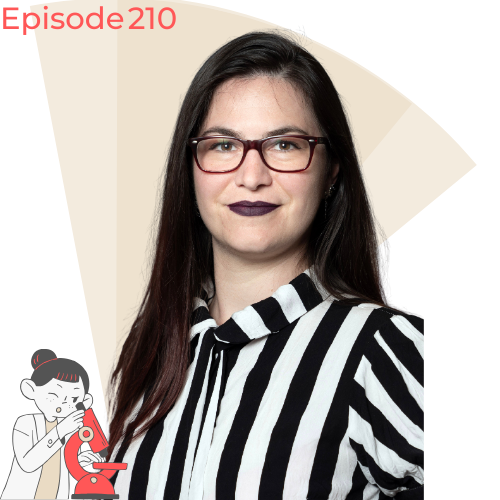About the Guest:
Antonija Grubisic-Cabo
Antonija Grubisic-Cabo is a researcher specializing in 2D materials and topological insulators. Her academic journey has taken her from Croatia to Denmark, Australia, Sweden, and the Netherlands. Antonija’s current research focuses on innovative methods to study material properties using laser light.

🌟 Key Takeaways from This Episode:
- Advancing Material Science: Antonija’s research focuses on 2D materials and topological insulators, using laser light to study their properties and create new phases with enhanced functionality.
- Career Journey: Antonija’s academic journey includes significant stints in Croatia, Denmark, Australia, Sweden, and the Netherlands, highlighting her diverse experience and expertise.
- Favourite Experiment: Antonija’s favourite experiment is the KISS method, which involves creating 2D materials in an ultra-high vacuum using gold as a substrate, resulting in larger flakes and better surface quality.
🔬 In This Episode, We Cover:
Antonija’s Research :
Antonija works on the properties of 2D materials and topological insulators when exposed to laser light, creating new phases and enhancing functionality. Her research aims to advance material science by understanding these interactions at the quantum level.
Antonija’s Career Journey:
Antonija’s journey includes moving from Croatia to Denmark for her PhD, then to Australia for her postdoc, followed by research positions in Sweden and the Netherlands. Her diverse experiences have enriched her research perspectives and expertise.
Antonija’s Favourite Research Experiment :
Antonija’s favorite experiment involves the KISS method for creating 2D materials in an ultra-high vacuum using gold as a substrate. This method results in larger flakes and better surface quality, making it a significant advancement in the field of material science.
Life as a Scientist- Beyond the Lab :
Antonija balances her research with teaching and maintaining connections with the global scientific community. She values the collaborative and inclusive nature of scientific research.
Antonija’s 3 Wishes
- More time for research: Antonija wishes for more dedicated time to focus on her research without the constraints of administrative tasks.
- Better open science with fewer obstacles: She advocates for a more transparent and accessible scientific community with fewer barriers to sharing knowledge.
- Greater understanding of the multifaceted role of scientists: Antonija emphasizes the importance of recognizing the diverse roles and responsibilities of scientists beyond just research.
Antonija’s Time on @RealSci_Nano :
Antonija will be tweeting about her research, organizing a conference on quantum magnetic materials, teaching, and the KISS project. Follow her for an inside look into the exciting world of 2D materials and topological insulators.
Join the Conversation
Follow & listen to “Under the Microscope” on Spotify, Apple Podcasts, Castbox, Amazon Music, Goodpods.
Got your own favourite podcast app? Follow the RSS link to find Under the Microscope.
Watch the video of all Under the Microscope episodes on The Science Talk’s YouTube channel. While you are at it, make sure to subscribe to our YouTube Channel.
Learn more about Under the Microscope – https://thesciencetalk.com/under-the-microscope/
We also offer partnerships to scientists, research institutions, industry, funding bodies & societies.
Get in touch to start the conversation.
